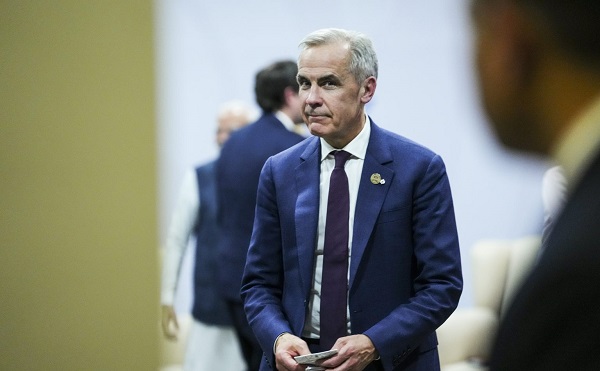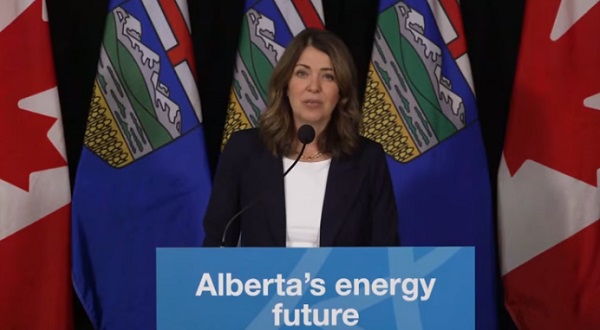Alberta
My European Favourites – One Day In The Bavarian Alps
My European Favourites – One Day In The Bavarian Alps
My favourite area of Germany is Bavaria. It’s the largest state, about one fifth the size of the country, and is located in the south-east of Germany. Bordering the Czech Republic and Austria, the state’s capital Munich is an easy place to fly into, and it is a great city to explore and enjoy, especially during Oktoberfest.

Hotel Wittlesbach and two buildings in Oberammergau with painted frescoes
Oberammergau, Germany
The Bavarian Alps are about an hour drive south from Munich, and one of my favourite places to stay is in the town of Oberammergau. You may have heard of the town as it is well known worldwide for its performance of the “Passion Play,” which is performed in the aptly named, Passion Play Theatre. In 1633, while the plague was rampant in Europe, the villagers promised to perform the play every ten years if no further deaths from the plague occurred in Oberammergau. The play details the suffering, death and resurrection of Christ. Their prayer was answered, and they kept their promise with the first play staged in 1634. The most recent performance was supposed to be in 2020, but due to the covid-19 pandemic, it has been moved to 2022.
Oberammergau is a compact place easily explored on foot. The Bavarian State Woodcarving School is located there, and there are shops where you can purchase everything from wooden toys to elaborate woodcarvings, including those of religious saints and crucifixes. As you walk through the town, you will see many buildings with painted frescoes (Lüftlmalerei) on their exterior walls with scenes from fairy tales, Bavarian folk themes, religious scenes and decorations that imitate architectural elements.
To be able to accomplish our sightseeing today we need to start with an early breakfast at one of the local hotels. One of my favourites is the Hotel Wittlesbach which is located right in the town centre and has been operated and owned by the Ternes family for many years. The hotel is full of the Bavarian charm you would expect, and the breakfast they offer is very good. We have stayed there many times over the years, and our groups love the hotel and location.

King Ludwig II of Bavaria’s Linderhof Palace and Neuschwanstein Castle
Mad King Ludwig II of Bavaria
Linderhof Palace is only a 15-minute drive away from Oberammergau and is the smallest of the three places or castles built by King Ludwig II of Bavaria. The Kingdom of Bavaria existed from 1805 until 1918, and the Ludwig’s Wittelsbach family ruled during the kingdom’s entire existence. In 1864, Ludwig became king at the age of 18. He had little interest in politics and soon began to spend his own wealth on personal projects, like three fairy tale palaces or castles. His spending and accumulating debt became such a concern by Bavaria’s political elite that they had a medical commission declare him insane and
incapable of reigning. A day later, he was on a walk with his psychiatrist, and they were both found dead; presumably drowned and floating in Lake Starnberg. Now that you know some of the story of King Ludwig II, we can talk about two of the three places or castles he built, Linderhof Palace and Neuschwanstein Castle. The third and largest building, the New Herrenchiemsee Palace, which will not be part of our day, was built on an island in Lake Chiemsee and was to be a copy of Versailles in France, but it was never completed.

Linderhof Palace, the Gilt Fountain and the Neptune Fountain
Linderhof Palace
Linderhof is the only palace that King Ludwig II lived to see completed, and it is located near where his father, King Maximilian II, had the royal hunting lodge. Ludwig went there many times as a child and was very familiar with the location in the Graswang Valley near Ettal.
Ludwig idolized the French Sun-King Louis XIV and wanted to emulate his grand palaces in Bavaria. Throughout the Linderhof Palace, you will find sun decorations as an homage to his idol and as a symbol of royal absolute power. Linderhof was initially intended to be Ludwig’s Versailles, but due mainly to an unsuitable sized area, it became a smaller project which was completed in 1886. During his construction of Linderhof, Ludwig purchased the much larger Herrenwörth island on Lake Chiemsee, and it became the new site to build his Versailles as Herrenchiemsee Palace.
The Linderhof Park is fun to explore and has a mixture of different garden designs, cascading waterfalls, fountains, and a large pond with a gilt fountain that jets water 25 meters in the air. As you walk through the park, you will find a swan pond, the Moroccan House, the Terrace gardens, a Temple of Venus, a Neptune fountain, a Royal Lodge, a chapel, a music pavilion, a Moorish kiosk, various parterres (level gardens with symmetrical patterns) and a grotto. The Venus grotto is an artificial grotto and theatre where Ludwig could sit in his small boat as it was gently rocked by a wave machine and watch his favourite operas by Wagner.
A ticket is required to tour the palace with a guide, but there are really only four rooms that served a specific purpose. The first room is the “Hall of Mirrors” which served as the main living room. Then there is Ludwig’s bed chamber, the dining room with a disappearing dumb-waiter, and the small audience chamber which was used by Ludwig as a study and not a room where he would see people. There are two “Tapestry Chambers” which serve no real purpose, and there are no real tapestries on the walls, but instead, there are canvas paintings made to imitate tapestries.
A visit to Linderhof is enjoyable mainly for the gardens and palace exterior, but you might as well see the palace interior if you are there. Near the parking area, there are shops where you can purchase your ticket to tour the palace, buy a souvenir or a snack. The Schloss Linderhof Hotel is there as well, but I would rather stay in Oberammergau.

Fussen Arena, Fussen’s colorful old town, plus the Abbey and Castle
Fussen
After spending the morning at Linderhof, we travel west for about an hour through winding mountain roads to the town of Fussen just north of the Austria border. Our hockey tours often go to Fussen to play at the BLZ Arena or Bundesleistungszentrum, which ever you prefer. The main arena is a fabulous structure with windows installed above the seating area offering natural light into the building and onto the ice surface. The hometown team, EV Fussen, nicknamed the Leopards, play in the U20 Deutsche Nachwuchsliga II. The BLZ complex also has a second arena, and surprisingly, a curling rink.
Fussen is at one end of the Romantic Road which is a 350 km tourist route with interesting towns, villages and sights. Wurzburg, in wine country, is at the other end and the medieval walled town of Rothenburg, just south of Wurzburg, is one the must stops on the road.
We will stop in Fussen for a couple of hours to explore the old town and have time for lunch. Fussen is an underappreciated town with medieval walls, baroque churches, a former Benedictine Abbey (St. Mang’s) and a museum with historical music instruments including violins and lutes. The interesting Fussen Castle has the unfortunate luck of being located on a few kilometers from one of the most famous castles in the world and gets no respect. With just a couple of hours in Fussen I’m walking directly to the old town’s pedestrian friendly cobblestone streets to find a nice place to have lunch. I don’t have a big sweet tooth, but I will try to make time to slip over to the Hotel Schlosskrone’s Konditorei Kurcafe for a nice dessert. The hard part at the pastry shop is deciding which one to have.

Hohenschwangau Castle and the scenic Bavarian Alps
Hohenschwangau Castle
Just a few kilometers from Fussen, you will find one of Germany’s top attractions- the Neuschawanstein Castle. When you arrive to the parking place, you will immediately see a mustard colored castle that is not as famous, named Hohenschwangau. King Maximillian II of Bavaria, Ludwig’s father, rebuilt this 19th century castle on the ruins of a previous castle which had been partially destroyed in various wars. The castle was restored to its original plans and became the summer residence of the royal family and a young Ludwig. The castle, which is now often overlooked by the larger Neuschwanstein Castle, can be toured along with the Museum of the Bavarian Kings. Unfortunately, our schedule does not allow time for it.

Mary’s Bridge, Neuschwanstein Castle entrance, lower courtyard and tower
Neuschwanstein Castle
Our goal today is to see the Neuschwanstein Castle before it closes. It’s a good idea to reserve your time online prior to arriving, especially in the busy season from May to September. After getting your ticket and tour time at the ticket office, you must get up to the castle courtyard on your own in time to join your tour. There are three ways to get up to the castle from the town; a walking path up to the castle that can take 20-30 minutes, horse carriages that take you most of the way up to the castle, and a shuttle bus that takes you up to the Mary’s Bridge (Marien Brucke). We will take the shuttle bus which costs a couple of Euros to the Mary’s Bridge drop off. The Mary’s Bridge offers a fantastic panoramic view of the castle and the valley below. Tourists flock here prior to or after touring the castle to take their most prized photo of the day.
After taking our photo, we still have to walk from the Mary’s Bridge on a paved path to the castle courtyard to join our English tour which takes about 35 minutes and ends, as most tours do, in a souvenir shop.
Despite its medieval look, Neuschwanstein was built in the 19th century and served no defensive purpose. It was built for one man, King Ludwig II of Bavaria, but unfortunately, he only spent eleven nights there. The original castle name was New Hohenschwangau Castle but was changed to Neuschwanstein Castle after Ludwig’s death. Neuschwanstein literally means “New Swan Castle” and was named after a character in one of Wagner’s operas, the Swan Knight.
In addition to being a big admirer of the French King Louis XIV, Ludwig was a big fan of the renowned composer Richard Wagner and was his patron. Many rooms in the castle were inspired by other characters in his operas, but sadly, Wagner never got a chance to see the castle as he died before its completion. The singer’s hall which occupies the entire third floor is adorned with characters from Wagner’s operas. The amazing woodwork in Ludwig’s bedroom took fourteen carpenters four years to complete. You will find that there is no throne room in the castle for Ludwig as the Throne Hall had not been completed by the time of his death. Although the fairy tale castle is one of the most photographed buildings in the world, tourists are not allowed to take photos inside the castle.
After our tour, we can slowly make our way down to the parking area and make our 45-minute drive back to Oberammergau where we can have dinner and enjoy the evening at an outdoor patio. Maybe tonight we will go to the Ammergauer Maxbräu in the Hotel Maximillian where they brew their own beer. That concludes a great day in the Bavarian Alps.
Explore Europe With Us
Azorcan Global Sport, School and Sightseeing Tours have taken thousands to Europe on their custom group tours since 1994. Visit azorcan.net to see all our custom tour possibilities for your group of 26 or more. Individuals can join our “open” signature sport, sightseeing and sport fan tours including our popular Canada hockey fan tours to the World Juniors. At azorcan.net/media you can read our newsletters and listen to our podcasts.
Images compliments of Paul Almeida and Azorcan Tours.
Alberta
Emissions Reduction Alberta offering financial boost for the next transformative drilling idea
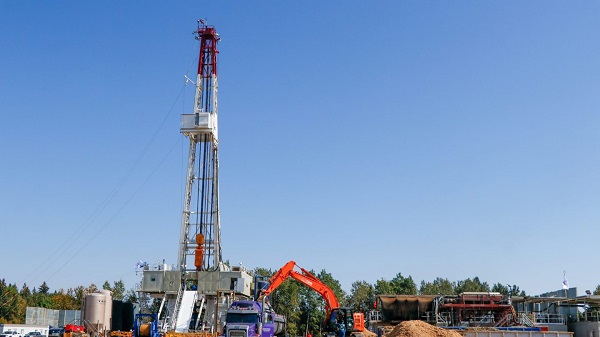
From the Canadian Energy Centre
$35-million Alberta challenge targets next-gen drilling opportunities
‘All transformative ideas are really eligible’
Forget the old image of a straight vertical oil and gas well.
In Western Canada, engineers now steer wells for kilometres underground with remarkable precision, tapping vast energy resources from a single spot on the surface.
The sector is continually evolving as operators pursue next-generation drilling technologies that lower costs while opening new opportunities and reducing environmental impacts.
But many promising innovations never reach the market because of high development costs and limited opportunities for real-world testing, according to Emissions Reduction Alberta (ERA).
That’s why ERA is launching the Drilling Technology Challenge, which will invest up to $35 million to advance new drilling and subsurface technologies.
“The focus isn’t just on drilling, it’s about building our future economy, helping reduce emissions, creating new industries and making sure we remain a responsible leader in energy development for decades to come,” said ERA CEO Justin Riemer.
And it’s not just about oil and gas. ERA says emerging technologies can unlock new resource opportunities such as geothermal energy, deep geological CO₂ storage and critical minerals extraction.
“Alberta’s wealth comes from our natural resources, most of which are extracted through drilling and other subsurface technologies,” said Gurpreet Lail, CEO of Enserva, which represents energy service companies.
ERA funding for the challenge will range from $250,000 to $8 million per project.
Eligible technologies include advanced drilling systems, downhole tools and sensors; AI-enabled automation and optimization; low-impact rigs and fluids; geothermal and critical mineral drilling applications; and supporting infrastructure like mobile labs and simulation platforms.
“All transformative ideas are really eligible for this call,” Riemer said, noting that AI-based technologies are likely to play a growing role.
“I think what we’re seeing is that the wells of the future are going to be guided by smart sensors and real-time data. You’re going to have a lot of AI-driven controls that help operators make instant decisions and avoid problems.”
Applications for the Drilling Technology Challenge close January 29, 2026.
Alberta
New era of police accountability
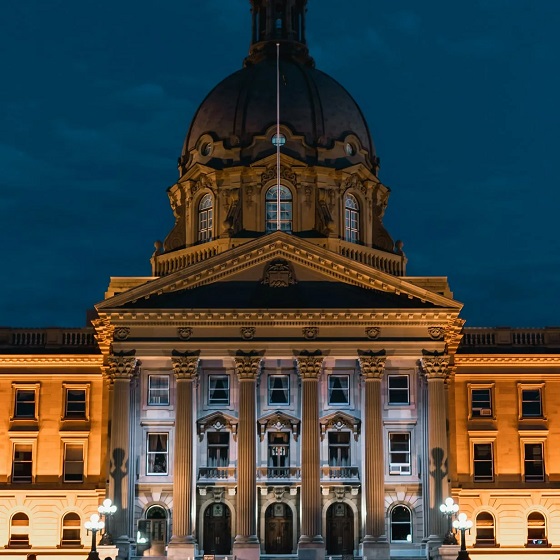
The Police Review Commission (PRC) is now fully operational, giving Albertans a single, independent process to file policing complaints and ensure accountability.
Alberta’s government is putting the province at the forefront of police oversight in Canada with the creation of the PRC. This new commission replaces the current patchwork of police investigating police with one independent body responsible for receiving complaints, conducting investigations and overseeing disciplinary hearings. By centralizing these functions within a single, independent agency, Alberta is ensuring complaints are handled fairly and consistently.
“The Police Review Commission represents a new era in how Alberta addresses policing complaints. These changes are part of a broader paradigm shift where police are no longer seen as an arm of the state, but rather an extension and a reflection of the community they serve. As an independent agency, it is committed to fairness, accountability and public trust, ensuring every complaint is investigated impartially and resolved openly.”
The Police Amendment Act, 2022 laid the groundwork for this new model, establishing a modern approach to oversight built on accountability, consistency and public confidence. The PRC will manage the full complaints process from receiving and assessing, to investigating and resolving complaints related to police conduct, including serious incidents and statutory offences.
“The Alberta Association of Chiefs of Police welcomes the launch of the Police Review Commission as a meaningful step toward enhanced oversight and greater transparency in policing. By ensuring complaints are reviewed fairly and impartially, the Commission will help strengthen accountability and reinforce public trust in Alberta’s police agencies. Police leaders across the province are committed to working with the Commission and our communities to ensure every Albertan has confidence in the integrity of our police services.”
A timely and transparent complaint resolution process is essential for both the public and police. That is why the PRC must complete investigations within 180 days, and if more time is needed, the chief executive officer must publicly report on delays and provide justification. This ensures clarity, predictability and accountability throughout the process. The commission will be arm’s length from government and police services, meaning people can have greater confidence that their complaints will be investigated and resolved impartially.
“Our goal is to build trust in policing by delivering timely resolutions and fair, consistent outcomes that put people first. Every complaint will be reviewed thoroughly and handled with the transparency and respect Albertans expect and deserve.”
The PRC can also initiate systemic reviews related to police conduct or emerging trends without the need for a public complaint, and these reviews must be made public. Together, these measures create a clear, accountable process that strengthens transparency, supports continuous improvement and enhances trust in how police oversight is carried out across Alberta.
“Public safety and the confidence the public has in our police services and service members are incumbent for effective and responsible service delivery. The PRC has been developed so that Albertans may have a responsible and impartial mechanism to voice concerns regarding delivery of policing services in Alberta. I am confident that the PRC will be an inclusive and diverse representation of the communities, so we may better understand the most appropriate and effective way to respond to concerns regarding police services. I look forward to the positive outcomes for the community.”
The commission’s design was informed by engagement with Indigenous communities, law enforcement partners, municipal officials and community organizations, ensuring its structure and training reflect Alberta’s diversity and values.
Quick facts
- The PRC will handle complaints in three categories:
- Level 1: Death, serious injury and serious or sensitive allegations involving all police services in Alberta, as well as peace officer agencies.
- Level 2: Allegations of criminal and other statutory offences involving all police services in Alberta.
- Level 3: Complaints about non-criminal misconduct involving officers employed by municipal and First Nations police services.
- Complaints that fall outside the three categories will be referred to the appropriate bodies or agencies for review.
- The Alberta Serious Incident Response Team (ASIRT) will now operate under the PRC.
-
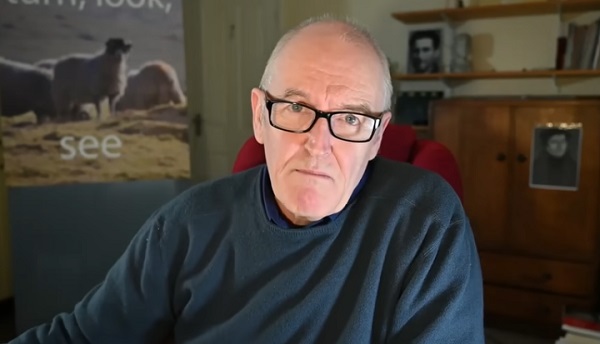
 COVID-192 days ago
COVID-192 days agoThe dangers of mRNA vaccines explained by Dr. John Campbell
-
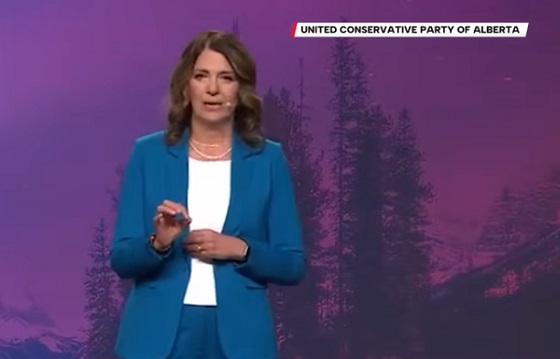
 Alberta2 days ago
Alberta2 days agoKeynote address of Premier Danielle Smith at 2025 UCP AGM
-
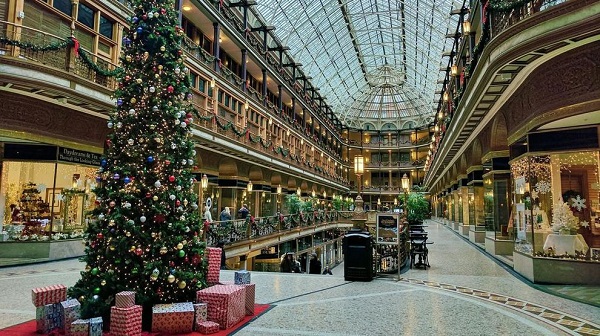
 Artificial Intelligence2 days ago
Artificial Intelligence2 days ago‘Trouble in Toyland’ report sounds alarm on AI toys
-

 National1 day ago
National1 day agoMedia bound to pay the price for selling their freedom to (selectively) offend
-

 Daily Caller2 days ago
Daily Caller2 days agoTom Homan Predicts Deportation Of Most Third World Migrants Over Risks From Screening Docs
-

 Energy2 days ago
Energy2 days agoCanadians will soon be versed in massive West Coast LPG mega-project
-

 Bruce Dowbiggin1 day ago
Bruce Dowbiggin1 day agoSometimes An Ingrate Nation Pt. 2: The Great One Makes His Choice
-

 Business4 hours ago
Business4 hours agoCanada’s future prosperity runs through the northwest coast






